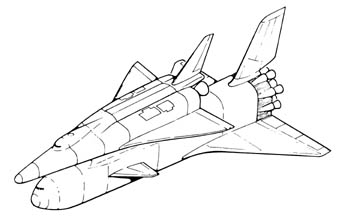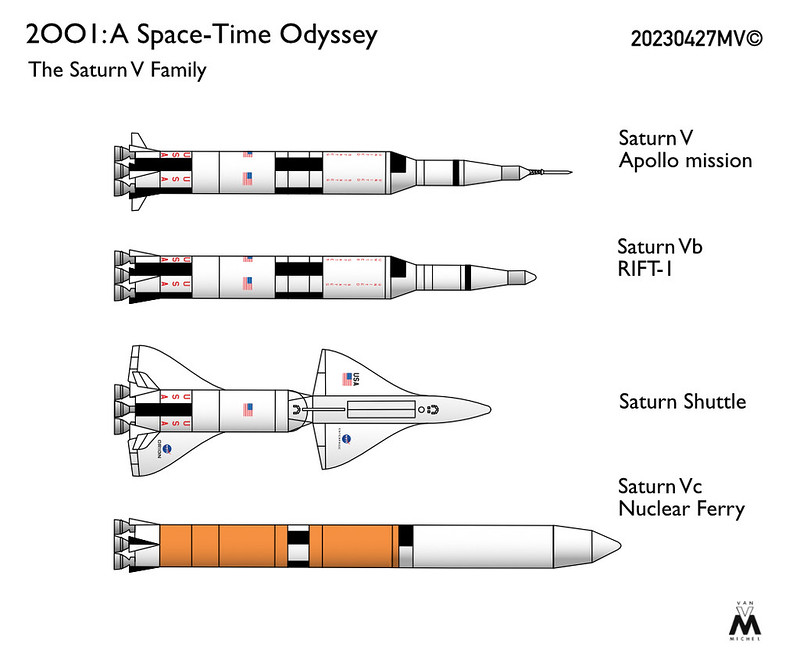Post by michelvan on Mar 25, 2022 18:19:03 GMT
33 - 1975 in the Soviet Union
Domestic Changes in the Soviet Union
Kosygin's economic policy furthered and deepened the reforms started by Khrushchev.
A new economic boom blossomed in the USSR. Average GNP growth ranged from 4-6% consistently.
For the first time, Russians began to see the luxuries and consumer goods afforded by a capitalist economic system,
including many foreign products (most notably Pepsi, Levi blue jeans and McDonalds)
and the emergence of a private upper-class separate from the state "Nomenklatura" bureaucrats.
Although older generations (those who grown up during the Stalinist era and the "Great Patriotic War")
and hardliners within the party were repulsed by the hedonism of the newly Russian consumer culture !
There was an overall increase in Soviet optimism during the 1970s. The more expensive and forward looking Neo-futurist design trend
dramatically increased in popularity within the Soviet Union, especially among the new middle and upper classes.
Khrushchev's early investments in computers, space and supersonic transports were now materialising.
Sergey Afanasyev better know by colleague as "The soviet Space Minister“ was pleased for the moment with the Soviet Space Program.
the Ministry of Space joined in the economic uptick by benefiting from the increased revenue flows from greater economic activity,
The Soviet military (only loosely tied to the civilian Soviet space agency) had been rattled by Khrushchev/Kosygin's reforms
as military resources were drained away for the consumer economy.
This dramatic economic revival of the USSR was heralded by Times Magazine on their front-page November 1975 as "The Soviet Dream".
This all came at a time when many Americans were still feeling the problems brought on by the 1973 oil crisis.
American Aerospace Ambition
While the USA worked on the long-term "Odyssey Program" to surpass the Soviets,
Had they own response, designated the "Galaxy Program".
The next step after this for each side of the Space Race was the build up of a permanent space station and lunar base,
both countries knew it. The Soviets had dominated the late 1950s-late 1960s phase of the space race so one-sidedly
(first satellite, first animal in orbit, first lunar probe, first man in space, first woman in space, consistently beating the US
in long-duration missions, first rendezvous in space, first spacewalk, first manned circumlunar flight, first lunar landing)
But the Americans made come-back. with Apollo J-class mission and Skylab, turning Lunar Soyuz and Salyut into puny efforts.
In response, the Ministry of Space worked on several projects to counter the Americans plans.
Most notably, an 80-tonne space station module was developed called OPS-1 which would form the backbone of the MKBS
The Multi Module Cosmic Base Station and eventually serve as a Mars transit habitat (as laid out in the Alita study).
Unlike the Americans, who invested in reusable nuclear thermal propulsion, the Soviets decided to put their resources into developing ion propulsion tugs for delivering large payloads into geostationary and lunar space.
This was desired both for military purposes and for a large-scale lunar base defined in the Columbus Study.
although the engineers involved knew the actual Ion tug wouldn't be ready until well into the 1980s.
In the meantime the Luna rocket were modified to deliver large multi-crew, long-duration, direct ascent L3M landers to the Lunar surface
(which would also form the basis for expanded crew/cargo delivery vehicles to LEO).
Like the Americans the Soviets attempted to build a reusable earth to orbit shuttle,
however development of this was pushed off to the late 1980s at the earliest.
However in 1975, much of OKB-1's initial work was already beginning to pay off.
Do Economic Boom the OKB were renamed to fit better in there new role inside Ministry of space and production of by-product for Soviet Economy
OKB-1 become Central Design Bureau of Experimental Machine Building russian abbrevuation TsKBEM
OKB-52 became Central Design Bureau of Machine Building (TsKBM)
OKB-586 became Yangel Design Office
OKB-276 now Kuybyshev Engine Design Bureau (KKBM)
Launch Vehicles and Infrastructure
To achieve all this, modifications to the Baikanour launch complex were needed, in order to handle the hydrogen fuel. which was completed by KBOM in 1975.
That same year the first Soyuz-F MV (a derivative of the N-III) and Proton-F MV (a derivative of the N-II) conducted
a series of test launches where one of the new Proton Launch vehicles brought test satellites into Geostationary Orbit over the USSR.
Meanwhile the first Luna-F MV (a derivative of the N-I "Luna" rocket) was completed inside the MIK-112 building.
The workers even painted word "surprise“ on the MIK-112 roof for US reconnaissance satellites overflying the Launch complex.
Over the course of autumn, Luna-F-MV-L1 was transported to the launch pad in order to test the new pad installation
and system integrations, before returning to MK-112 building for L3M installation.
The project proceeded as planned, with 1976 marking the first unmanned test launch of the Luna-F-MV as "Luna 24".
The L3M made good good landing on Moon, but mission was cut short after 14 days do technical problem and return to earth.
Next of the Salyut Program
The Salyut 3 & 4 space stations were launched in 1975 and 1976,
Served as the prototype stations before the construction of a permanent space base.
Thanks to the newly introduced Proton-F, the station was substantially larger with two docking ports, a higher orbit and greater capabilities. Soyuz 29, 30 and 31 each docked with Salyut-3 for long duration missions.
with help of a new spacecraft called Progress, a unmanned Soyuz modified into freighter,
this push the mission duration from 60 to 90 and even 180 days in space
After 450 days of being continuously occupied, Salyut-3 was deactivated and left to re-enter the Earth's atmosphere.
Salyut-4 was modified for more mission and was visited by 12 Soyuz mission and several Progress from 1976
whit help of unmanned Progress docked to the station,
The second Soyuz 7K-SM Mission help to expanded mission for a world-record 360-day mission !
The station was deorbit in end 1977 for Salyut 5 and 6 Test
Soyuz 7K-SM
First designed in 1967, this new manned spacecraft would be backbone for new Soviet Space architecture.
The 7K-SM would serve as the supply and crew craft for the MKBS space base and as crew module for planned lunar landers.
This spacecraft compared very favorably compare to the 1st generation Soyuz.
The 7K-SM was designed as a big bell shaped capsule of 3.7 meter in diameter and 5 meter long,
The first 7K-SM was launched as the unmanned Cosmos 745 with a Proton-F on June 1976.
It remained in orbit for 250 days to test the long-duration endurance of the vehicle before landing successfully.
This was followed as the the Cosmos 772, launched by a Proton-F on spring 1977 to Salyut 4 with 3.75 tonnes of supplies.
The Spacecraft served as supply module and expansion of the station after the last crew ended their record-breaking 360 day stay. Cosmos 772 then de-docked and successfully returning to Earth,
Do to it's radically new design suggestions were made to relabelled 7K-SM to Zarya.
The first manned missions were set for 1979/80.
The Woman on the Moon
The ways in which Soviet government operated, had not entirely abolished,
and so this missions came straight from the Politburo (and they weren't taking no for an answer).
Ministry of Space accepted the order, much to the displeasure of the male-dominated TsKBEM and the Cosmonaut group.
Khrushchev was the first to originally propose the idea and after a single mission with three Female cosmonauts.
The Vostok 3 mission of 1963, crewed by Valentina Tereshkova, Valentina Ponomaryova and Irina Solovyova,
Was the first and until then only mission to include Womans in space.
Now the Politburo wanted an all-female lunar mission to renew interest in the Soviet space program,
set another milestone and solidify the USSR's credentials for liberating women and closing the L-3 program with a memorable flight.
Vladimir Komarov, head of the Cosmonaut Group, investigated to find out who pushed this idea through,
and found it to be his old collegue from the Vostok era, Valentina Tereshkova and Soviet Military Commander Yevgenly Savitskly.
Tereshkova made a political career within the Communist Party after the female cosmonaut group was dissolved,
and quickly worked her way up to become a member of the Presidium of the Soviet Union.
Yevgenly Savitskly's daughter Sevtlana Yevgenyvna Savitskaya is an excellent pilot, having won 6 world aerobatic championship in 1970s
and having flown MIG jets for the Soviet air force. Her father wanted the best for her: to become a cosmonaut,
Although until Tereshkova pitched the idea to him, he never dreamed she would land on Moon.
Valentina Ponomaryova, another veteran of the Vostok 3 flight, remained in the Space program and even married Cosmonaut Yuri Pomomaryov,
before getting a degree in technical science (coincidentally working on the Soyuz spacecraft).
Now Ponomaryova and Savitskaya were selected for Soyuz 28 mission,
The last of the L3-Complex flights and a perfectly timed triumph for the International Year of the Woman.
On May 14, 1975. Soyuz 28 was launched to the moon.
Then May 19, Savitskaya became the first woman to conduct an EVA as she moved from the LOK to LK in lunar orbit.
She landed right on target next to Lunokhod 14 at Messiers Craters in Mare Fecunditatis.

As she left the LK
Then she visit Lunokhod 14 recover it’s Sample container, store it in LK and pull science package out.
follow by collection of lunar sample near LK before she make a pause inside LK,
the Second EVA she use the Rover, were she was drive to surroundings of Messer A wer she collect additional samples an take picture of the crater slopes, after 6 hours on lunar surface Savitskaya flew back to LOK in Lunar orbit.
73 hours later they landed save in USSR and celebrated as new Heroines.
Sadly Lunokhod 14 was lost in extended Mission as they try to drive into Messier A,
The crater slopes were to steep and rover slip for several km downward, start somersault and impacted on crater floor.
Much to surprise of scientist, was how the Impact happen: Crater B was the scratch the Meteoroid made first, then it jump and impacted forming crater A and it’s debris impact formed the bright ray.
also that area Mare Fecunditatis has layers from several different material, like white material revealed by the impacts of Messier debris.
The Impact, that Woman walked on Moon was enormous, the Ministry and NASA got truckloads of job applications by woman.
It was a propaganda coup for the USSR and a surge in Soviet smugness about the place of women in society
as compared to the United States as USSR propaganda posters say:
"American women are in the kitchen, Soviet women are on the Moon!".
NASA responded by announcing that the next NASA astronaut group ("Group 8") would include African Americans as well as Women.
Domestic Changes in the Soviet Union
Kosygin's economic policy furthered and deepened the reforms started by Khrushchev.
A new economic boom blossomed in the USSR. Average GNP growth ranged from 4-6% consistently.
For the first time, Russians began to see the luxuries and consumer goods afforded by a capitalist economic system,
including many foreign products (most notably Pepsi, Levi blue jeans and McDonalds)
and the emergence of a private upper-class separate from the state "Nomenklatura" bureaucrats.
Although older generations (those who grown up during the Stalinist era and the "Great Patriotic War")
and hardliners within the party were repulsed by the hedonism of the newly Russian consumer culture !
There was an overall increase in Soviet optimism during the 1970s. The more expensive and forward looking Neo-futurist design trend
dramatically increased in popularity within the Soviet Union, especially among the new middle and upper classes.
Khrushchev's early investments in computers, space and supersonic transports were now materialising.
Sergey Afanasyev better know by colleague as "The soviet Space Minister“ was pleased for the moment with the Soviet Space Program.
the Ministry of Space joined in the economic uptick by benefiting from the increased revenue flows from greater economic activity,
The Soviet military (only loosely tied to the civilian Soviet space agency) had been rattled by Khrushchev/Kosygin's reforms
as military resources were drained away for the consumer economy.
This dramatic economic revival of the USSR was heralded by Times Magazine on their front-page November 1975 as "The Soviet Dream".
This all came at a time when many Americans were still feeling the problems brought on by the 1973 oil crisis.
American Aerospace Ambition
While the USA worked on the long-term "Odyssey Program" to surpass the Soviets,
Had they own response, designated the "Galaxy Program".
The next step after this for each side of the Space Race was the build up of a permanent space station and lunar base,
both countries knew it. The Soviets had dominated the late 1950s-late 1960s phase of the space race so one-sidedly
(first satellite, first animal in orbit, first lunar probe, first man in space, first woman in space, consistently beating the US
in long-duration missions, first rendezvous in space, first spacewalk, first manned circumlunar flight, first lunar landing)
But the Americans made come-back. with Apollo J-class mission and Skylab, turning Lunar Soyuz and Salyut into puny efforts.
In response, the Ministry of Space worked on several projects to counter the Americans plans.
Most notably, an 80-tonne space station module was developed called OPS-1 which would form the backbone of the MKBS
The Multi Module Cosmic Base Station and eventually serve as a Mars transit habitat (as laid out in the Alita study).
Unlike the Americans, who invested in reusable nuclear thermal propulsion, the Soviets decided to put their resources into developing ion propulsion tugs for delivering large payloads into geostationary and lunar space.
This was desired both for military purposes and for a large-scale lunar base defined in the Columbus Study.
although the engineers involved knew the actual Ion tug wouldn't be ready until well into the 1980s.
In the meantime the Luna rocket were modified to deliver large multi-crew, long-duration, direct ascent L3M landers to the Lunar surface
(which would also form the basis for expanded crew/cargo delivery vehicles to LEO).
Like the Americans the Soviets attempted to build a reusable earth to orbit shuttle,
however development of this was pushed off to the late 1980s at the earliest.
However in 1975, much of OKB-1's initial work was already beginning to pay off.
Do Economic Boom the OKB were renamed to fit better in there new role inside Ministry of space and production of by-product for Soviet Economy
OKB-1 become Central Design Bureau of Experimental Machine Building russian abbrevuation TsKBEM
OKB-52 became Central Design Bureau of Machine Building (TsKBM)
OKB-586 became Yangel Design Office
OKB-276 now Kuybyshev Engine Design Bureau (KKBM)
Launch Vehicles and Infrastructure
To achieve all this, modifications to the Baikanour launch complex were needed, in order to handle the hydrogen fuel. which was completed by KBOM in 1975.
That same year the first Soyuz-F MV (a derivative of the N-III) and Proton-F MV (a derivative of the N-II) conducted
a series of test launches where one of the new Proton Launch vehicles brought test satellites into Geostationary Orbit over the USSR.
Meanwhile the first Luna-F MV (a derivative of the N-I "Luna" rocket) was completed inside the MIK-112 building.
The workers even painted word "surprise“ on the MIK-112 roof for US reconnaissance satellites overflying the Launch complex.
Over the course of autumn, Luna-F-MV-L1 was transported to the launch pad in order to test the new pad installation
and system integrations, before returning to MK-112 building for L3M installation.
The project proceeded as planned, with 1976 marking the first unmanned test launch of the Luna-F-MV as "Luna 24".
The L3M made good good landing on Moon, but mission was cut short after 14 days do technical problem and return to earth.
Next of the Salyut Program
The Salyut 3 & 4 space stations were launched in 1975 and 1976,
Served as the prototype stations before the construction of a permanent space base.
Thanks to the newly introduced Proton-F, the station was substantially larger with two docking ports, a higher orbit and greater capabilities. Soyuz 29, 30 and 31 each docked with Salyut-3 for long duration missions.
with help of a new spacecraft called Progress, a unmanned Soyuz modified into freighter,
this push the mission duration from 60 to 90 and even 180 days in space
After 450 days of being continuously occupied, Salyut-3 was deactivated and left to re-enter the Earth's atmosphere.
Salyut-4 was modified for more mission and was visited by 12 Soyuz mission and several Progress from 1976
whit help of unmanned Progress docked to the station,
The second Soyuz 7K-SM Mission help to expanded mission for a world-record 360-day mission !
The station was deorbit in end 1977 for Salyut 5 and 6 Test
Soyuz 7K-SM
First designed in 1967, this new manned spacecraft would be backbone for new Soviet Space architecture.
The 7K-SM would serve as the supply and crew craft for the MKBS space base and as crew module for planned lunar landers.
This spacecraft compared very favorably compare to the 1st generation Soyuz.
The 7K-SM was designed as a big bell shaped capsule of 3.7 meter in diameter and 5 meter long,
The first 7K-SM was launched as the unmanned Cosmos 745 with a Proton-F on June 1976.
It remained in orbit for 250 days to test the long-duration endurance of the vehicle before landing successfully.
This was followed as the the Cosmos 772, launched by a Proton-F on spring 1977 to Salyut 4 with 3.75 tonnes of supplies.
The Spacecraft served as supply module and expansion of the station after the last crew ended their record-breaking 360 day stay. Cosmos 772 then de-docked and successfully returning to Earth,
Do to it's radically new design suggestions were made to relabelled 7K-SM to Zarya.
The first manned missions were set for 1979/80.
The Woman on the Moon
The ways in which Soviet government operated, had not entirely abolished,
and so this missions came straight from the Politburo (and they weren't taking no for an answer).
Ministry of Space accepted the order, much to the displeasure of the male-dominated TsKBEM and the Cosmonaut group.
Khrushchev was the first to originally propose the idea and after a single mission with three Female cosmonauts.
The Vostok 3 mission of 1963, crewed by Valentina Tereshkova, Valentina Ponomaryova and Irina Solovyova,
Was the first and until then only mission to include Womans in space.
Now the Politburo wanted an all-female lunar mission to renew interest in the Soviet space program,
set another milestone and solidify the USSR's credentials for liberating women and closing the L-3 program with a memorable flight.
Vladimir Komarov, head of the Cosmonaut Group, investigated to find out who pushed this idea through,
and found it to be his old collegue from the Vostok era, Valentina Tereshkova and Soviet Military Commander Yevgenly Savitskly.
Tereshkova made a political career within the Communist Party after the female cosmonaut group was dissolved,
and quickly worked her way up to become a member of the Presidium of the Soviet Union.
Yevgenly Savitskly's daughter Sevtlana Yevgenyvna Savitskaya is an excellent pilot, having won 6 world aerobatic championship in 1970s
and having flown MIG jets for the Soviet air force. Her father wanted the best for her: to become a cosmonaut,
Although until Tereshkova pitched the idea to him, he never dreamed she would land on Moon.
Valentina Ponomaryova, another veteran of the Vostok 3 flight, remained in the Space program and even married Cosmonaut Yuri Pomomaryov,
before getting a degree in technical science (coincidentally working on the Soyuz spacecraft).
Now Ponomaryova and Savitskaya were selected for Soyuz 28 mission,
The last of the L3-Complex flights and a perfectly timed triumph for the International Year of the Woman.
On May 14, 1975. Soyuz 28 was launched to the moon.
Then May 19, Savitskaya became the first woman to conduct an EVA as she moved from the LOK to LK in lunar orbit.
She landed right on target next to Lunokhod 14 at Messiers Craters in Mare Fecunditatis.

As she left the LK
This is another Triumph of Soviet Union and greater one for all Woman on Earth
Then she visit Lunokhod 14 recover it’s Sample container, store it in LK and pull science package out.
follow by collection of lunar sample near LK before she make a pause inside LK,
the Second EVA she use the Rover, were she was drive to surroundings of Messer A wer she collect additional samples an take picture of the crater slopes, after 6 hours on lunar surface Savitskaya flew back to LOK in Lunar orbit.
73 hours later they landed save in USSR and celebrated as new Heroines.
Sadly Lunokhod 14 was lost in extended Mission as they try to drive into Messier A,
The crater slopes were to steep and rover slip for several km downward, start somersault and impacted on crater floor.
Much to surprise of scientist, was how the Impact happen: Crater B was the scratch the Meteoroid made first, then it jump and impacted forming crater A and it’s debris impact formed the bright ray.
also that area Mare Fecunditatis has layers from several different material, like white material revealed by the impacts of Messier debris.
The Impact, that Woman walked on Moon was enormous, the Ministry and NASA got truckloads of job applications by woman.
It was a propaganda coup for the USSR and a surge in Soviet smugness about the place of women in society
as compared to the United States as USSR propaganda posters say:
"American women are in the kitchen, Soviet women are on the Moon!".
NASA responded by announcing that the next NASA astronaut group ("Group 8") would include African Americans as well as Women.

















